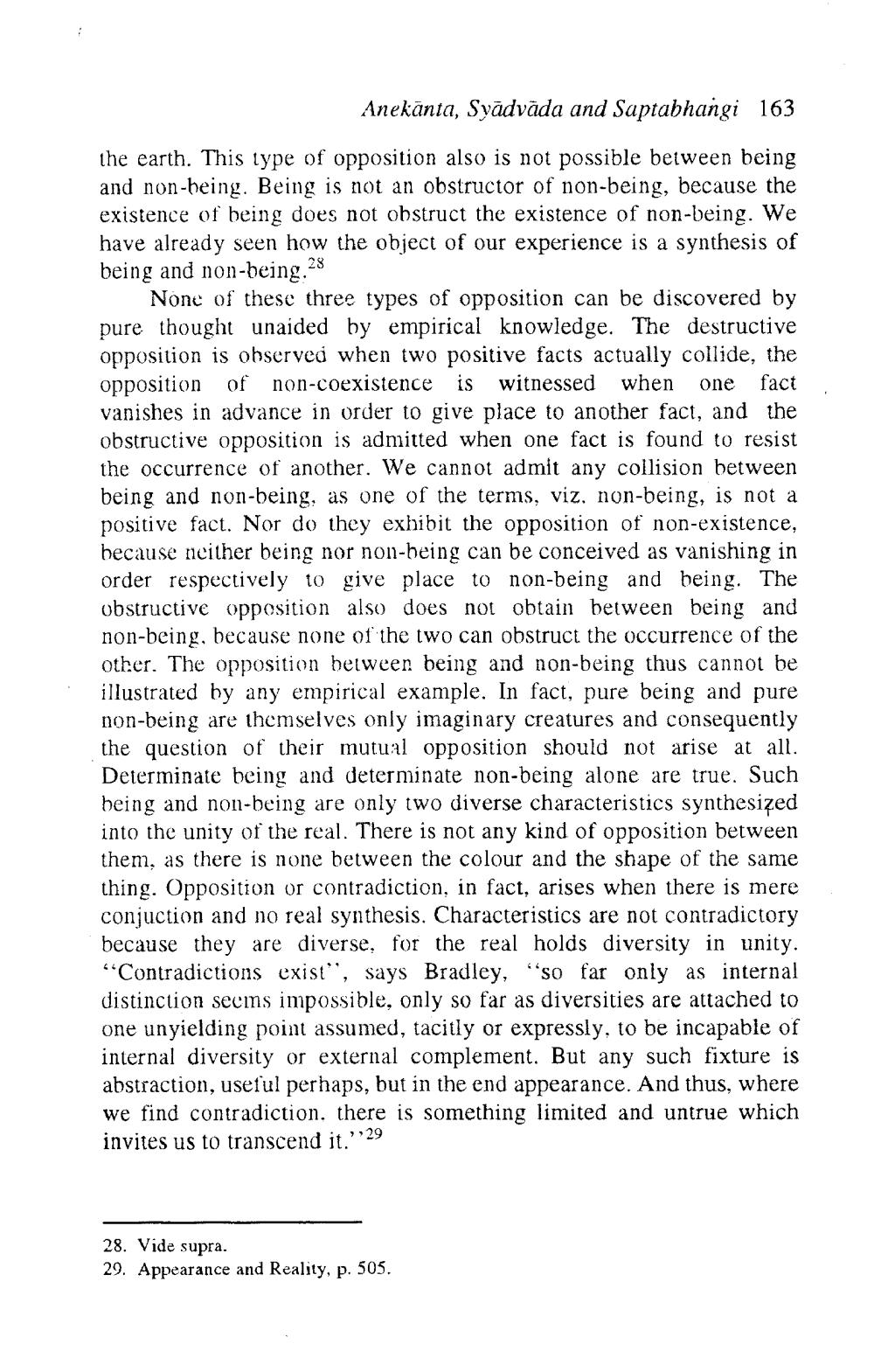________________
Anekānta, Syādvāda and Saptabhangi 163
the earth. This type of opposition also is not possible between being and non-heing. Being is not an obstructor of non-being, because the existence of being does not obstruct the existence of non-being. We have already seen how the object of our experience is a synthesis of being and non-being.28
None of these three types of opposition can be discovered by pure thought unaided by empirical knowledge. The destructive opposition is observed when two positive facts actually collide, the opposition of non-coexistence is witnessed when one fact vanishes in advance in order to give place to another fact, and the obstructive opposition is admitted when one fact is found to resist the occurrence of another. We cannot admit any collision between being and non-being, as one of the terms, viz. non-being, is not a positive fact. Nor do they exhibit the opposition of non-existence, because neither being nor non-being can be conceived as vanishing in order respectively to give place to non-being and being. The obstructive opposition also does not obtain between being and non-being, because none of the two can obstruct the occurrence of the other. The opposition between being and non-being thus cannot be illustrated by any empirical example. In fact, pure being and pure non-being are themselves only imaginary creatures and consequently the question of their mutual opposition should not arise at all. Determinate being and determinate non-being alone are true. Such being and non-being are only two diverse characteristics synthesized into the unity of the real. There is not any kind of opposition between them, as there is none between the colour and the shape of the same thing. Opposition or contradiction, in fact, arises when there is mere conjuction and no real synthesis. Characteristics are not contradictory because they are diverse, for the real holds diversity in unity. “Contradictions exist", says Bradley, so far only as internal distinction seems impossible, only so far as diversities are attached to one unyielding point assumed, tacitly or expressly, to be incapable of internal diversity or external complement. But any such fixture is abstraction, useful perhaps, but in the end appearance. And thus, where we find contradiction. there is something limited and untrue which invites us to transcend it.'29
28. Vide supra. 29. Appearance and Reality, p. 505.




